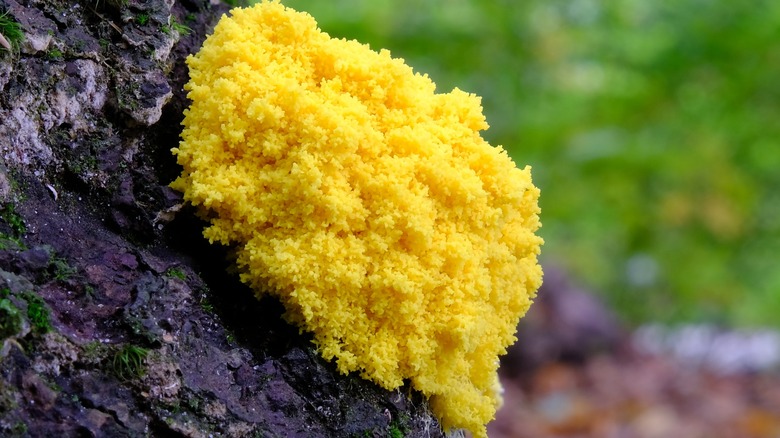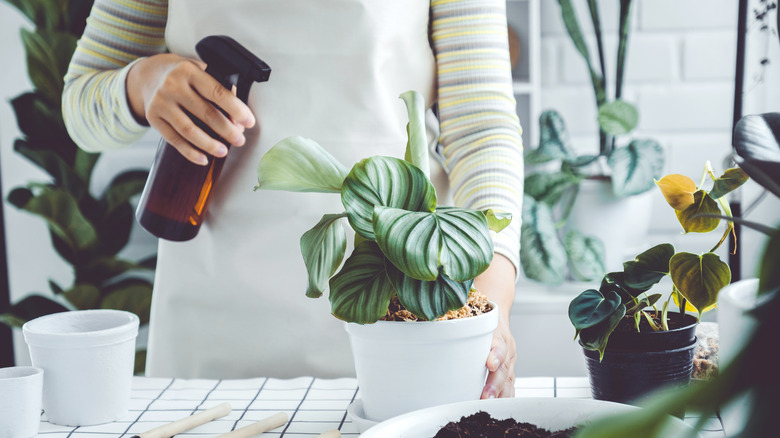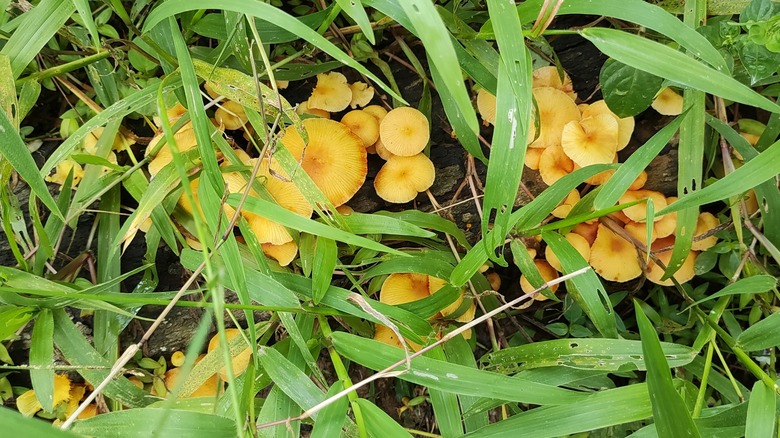Should You Use Vinegar To Get Rid Of Unsightly Yellow Mold On Houseplant Soil?
Molds of any kind in the home are alarming, and the bright yellow kind emerging from your favorite house plant can catch you off guard. While yellow mold won't harm your plants, it could be unsafe for the people and pets living indoors, so it must be taken care of quickly. As you search online for fast solutions, you might see people recommend vinegar to kill mold. But is this sound advice you should listen to? While there are many ways to get rid of icky mold, vinegar is an option that will kill many kinds of fungi and stop them from spreading.
Yellow molds like Lepiota lutea, a mushroom, and Fuligo septica, a slime-like mold, appear in moist conditions with plenty of organic matter to feed on. Your well-watered house plant that has dropped old leaves or branches is the perfect environment for yellow fungi to thrive. Vinegar may be a helpful solution for preventing mold from spreading, but changing the environment that allowed the fungi to grow will be the long-term solution for preventing future outbreaks.
Vinegar's effects against mold and soil
Vinegar — acetic acid — has been researched extensively as a household cleaner, pesticide, and fungicide for many years. According to Mississippi State University, vinegar can kill about 82% of all mold species, making it a good home remedy solution. Household vinegar is non-toxic and doesn't create harmful gases, so it's a safe option to use in the home. Acetic acid burns plants on contact, which is why it's so helpful against mold. Vinegar has been tested as a weed killer with moderate success. It only burns what it comes into contact with, so if any portion of the mold goes unexposed, the fungi may continue to spread. However, repeated applications should be effective.
A study from Purdue University showed that high concentrations of vinegar were more effective at killing plants. Household vinegar usually has no more than 5% concentration. It should be noted that anything higher than 11% can cause severe damage to the skin and eyes. But, if vinegar is an acid that can kill plants, should it even be used by the plants you love? It's a valid question with a not-so-black-or-white answer. The con of using vinegar near your houseplants is that vinegar doesn't discriminate — it will burn any plant. So, you'll need to be careful about where you spray it. However, it doesn't build up in the soil, won't kill roots, and breaks down quickly, so it won't have long-term residual effects in the soil.
Types of yellow mold
Knowing what kind of fungus is among us is key to using vinegar effectively. Lepiota lutea is a yellow mushroom that is toxic to humans and animals, but they aren't problematic for your plants. So, unless you have kids or pets running around, you don't need to get rid of this mushroom. You can carefully remove it with a gloved hand or spray it with vinegar to help it die out faster. Removing it yourself may be the safer option since it's a poisonous concern.
Fuligo septica is a slime mold that's earned the beautiful nickname of dog vomit slime mold thanks to its just as beautiful appearance. (That's a sarcastic sentence!) This mold's presence will likely shock and gross you out, but its yellow appearance will turn pink and dry up, not that it makes it look any better. Despite its awful appearance, this one is harmless. It may rev up your allergies, but it isn't toxic. Spraying it with vinegar will help eliminate it, but removing it with a trowel may be the best method if you don't want to look at it longer than you have to.


